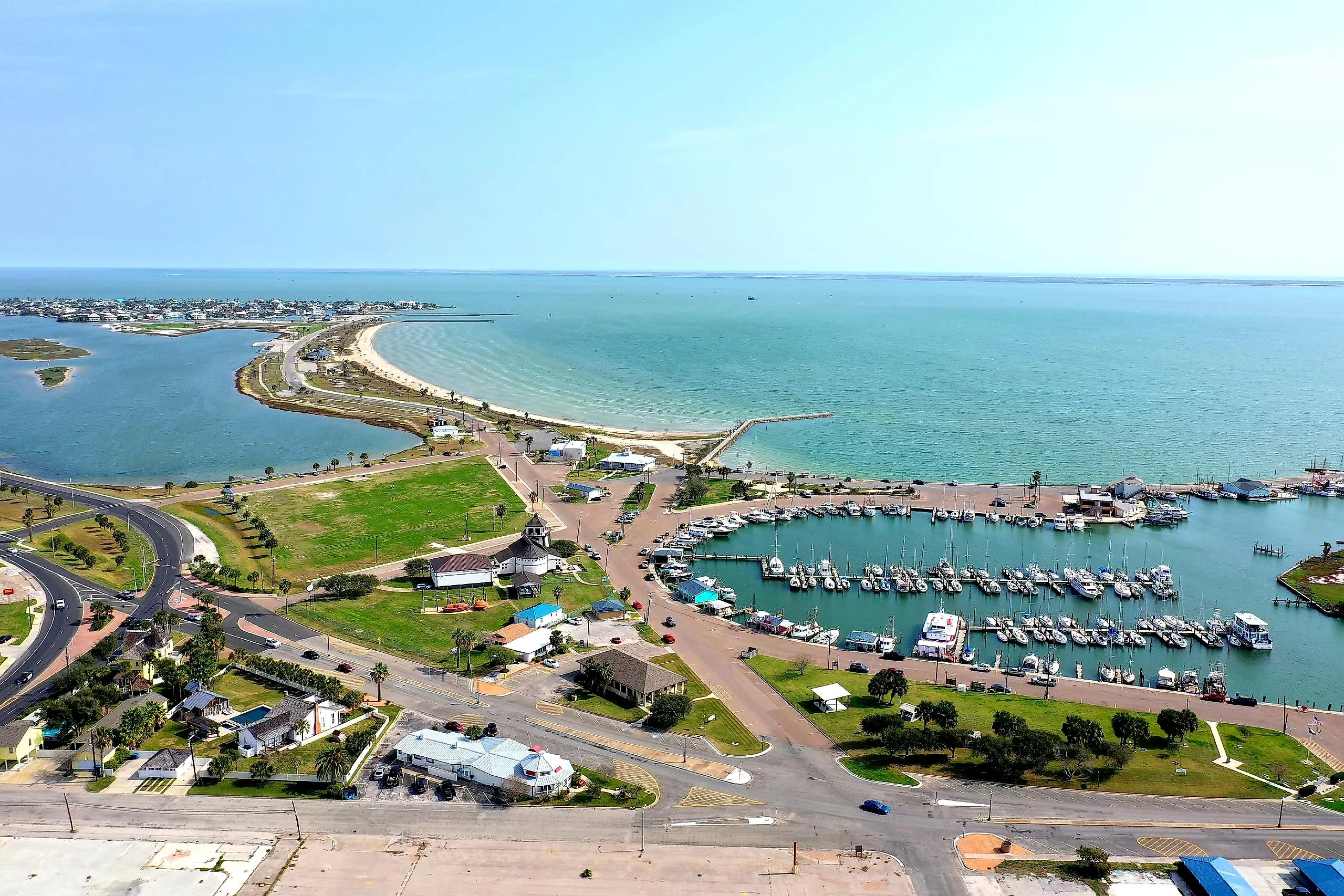
7 Best Texas Towns For Retirees
Texas isn’t merely a tax haven or a sun‑belt escape; it is a state whose smaller towns still behave like self‑contained republics, each flying a distinct cultural flag long before the Lone Star became marketing shorthand. In these seven communities, retirees don’t just downsize; they step into living museums where German dialects, Gulf shrimping lore, granite quarries, and outlaw ghost stories still inform the daily news.
But this list is not a rehearsed roll‑call of "charming" burgs. Every pick earns its place by offering one experiential edge you won’t find in city brochures: a folk festival that outdraws Austin, a Blue‑Wave‑certified beach policed by locals, a pink‑granite dome older than Texas itself, or a century‑old courthouse that still tries cases every Tuesday. What follows is a seven‑stop itinerary for retirees who want more than low taxes and mild winters: they want a second hometown with its own sharply drawn personality.
Fredericksburg
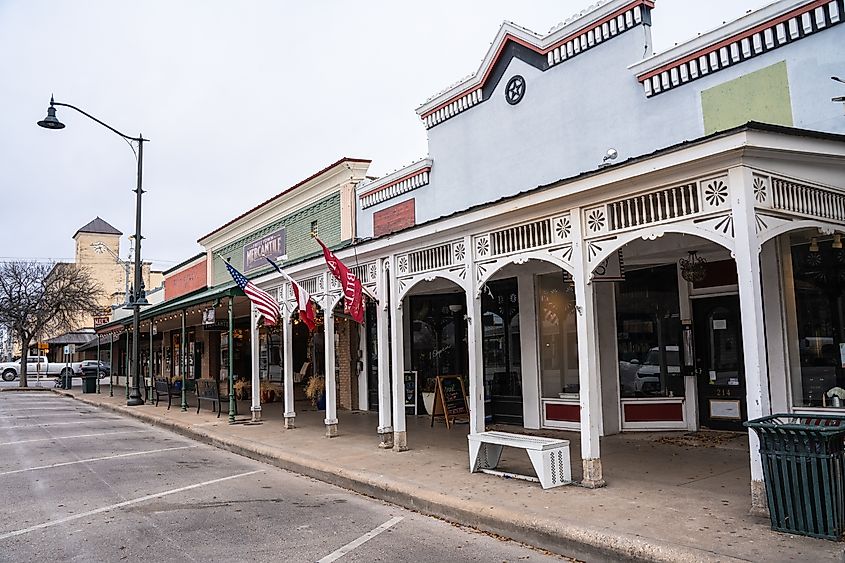
Fredericksburg is a former German settlement where street signs still read in both English and German, and where the legacy of 19th-century settlers lives on not in brochures, but in daily life. The town’s German Marktplatz is a functioning civic space, not a replica. Churches built by immigrants in the 1800s are still used for Sunday services. This is not a themed town; it’s a lived-in place with deep roots. The surrounding Hill Country terrain gives it a geographic identity just as strong, where granite outcrops and dry grasslands meet working vineyards.
Fredericksburg’s Main Street is a walkable stretch of independent shops and restaurants. The Old German Bakery & Restaurant opens early and sells strudel without gimmicks. Nearby, the National Museum of the Pacific War, unusually large for a town of this size, holds Admiral Nimitz’s boyhood hotel and a Japanese mini-sub captured at Pearl Harbor. Enchanted Rock State Natural Area, 20 minutes outside town, is a pink granite dome with views clear to Mexico on a dry day. Sunset Grill, a converted house on Live Oak Street, serves crab cakes and eggs Benedict without a waitlist.
Kerrville
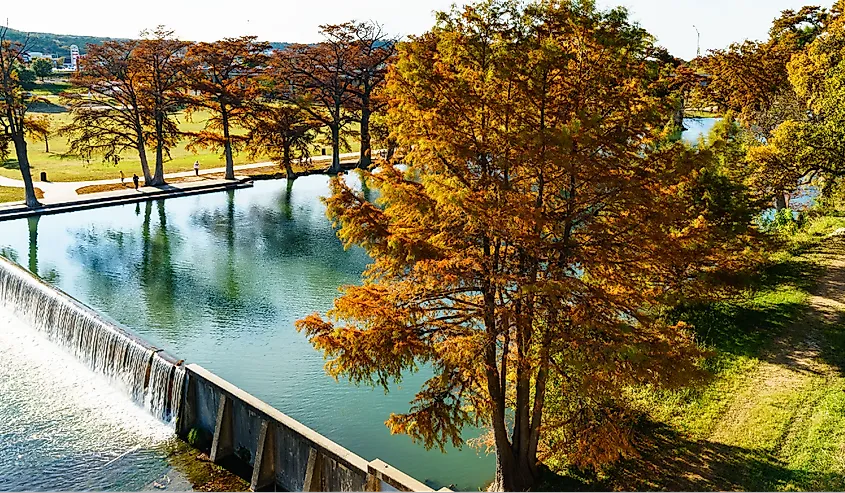
Kerrville sits on a slow bend of the Guadalupe River, where limestone banks hold back water clear enough to reflect the cypress trees. The town has quietly developed its own cultural ecosystem—isolated enough to be self-sustaining, but close enough to San Antonio for specialists and major hospitals. Kerrville is also home to the longest-running folk music festival in Texas. The Kerrville Folk Festival, founded in 1972, spans 18 days every spring and attracts artists who skip Austin. Beyond music, the town is known among Texas sculptors: the Museum of Western Art, built in the style of a Spanish hacienda, houses works by members of the Cowboy Artists of America.
Louise Hays Park runs alongside the river and includes a dam-fed waterfall, paved trail, and a footbridge that connects downtown to the island-like Kerrville Schreiner Park, where herons nest in spring. The café scene is local. PAX Coffee and Goods, located inside a restored 1940s motor court, serves espresso roasted in Austin and sandwiches made with Texas-grown greens. Pint & Plow Brewing, three blocks away, operates a brewery, bakery, and kitchen under one roof, with seating inside the old brick stables. The Guadalupe River Trail cuts through it all, used daily by retirees.
Boerne

Boerne was settled in the 1840s by German freethinkers, intellectuals who fled Europe after the 1848 revolutions and brought with them a library, not just livestock. The town’s name honors German author Ludwig Börne, and its literary legacy still shows. The Patrick Heath Public Library houses a genealogy room that draws researchers from as far as Houston. Boerne is built along Cibolo Creek, with limestone bridges and floodgates that have been in use since the 19th century. The town is part of the Texas Hill Country Trail, but its pace is quieter than nearby Fredericksburg or Wimberley. The entire walkable stretch of the Hill Country Mile includes 80 shops, cafés, and galleries inside intact stone buildings from the 1800s.
Cibolo Nature Center, just south of town, spans 100 acres of trails, prairie, and boardwalk through a cypress-lined marsh. Herff Farm, a restored 1850s homestead next door, runs Saturday markets year-round. Cave Without a Name, located 11 miles northeast, holds underground concerts in a natural limestone chamber. The Dienger Trading Co., a 19th-century dry goods building turned café and bookstore, offers breakfast on mismatched china. Bear Moon Bakery, two blocks over, bakes on-site and supplies much of Boerne’s Main Street with kolaches and seeded loaves.
Marble Falls

Marble Falls was built beside a river that was dammed in 1951, turning the original falls into Lake Marble Falls and creating one of the few towns in Texas with a waterfront downtown. The town's name comes from the limestone outcrops locals mistook for marble. The surrounding area still produces high-grade granite, the same pink rock used for the Texas State Capitol. Retirees settle here for the view, but also for the layout. Johnson Park sits at the edge of the lake and connects by trail to Westside Park and Falls Creek Park, forming a continuous greenbelt used daily by walkers and cyclists.
The Blue Bonnet Cafe has been operating since 1929 and sells over 2,000 slices of pie a week. It’s known statewide and still uses the original menu board. The Marble Falls Walkway of Lights runs along the lakefront every winter and draws visitors from six counties. Uptown Sound, a restored theater on Main Street, hosts rotating jazz nights and live storytelling events. The lake itself, five miles end to end, is used for paddleboarding, fishing, and weekly ski boat runs from Lakeside Park’s public ramp.
Granbury
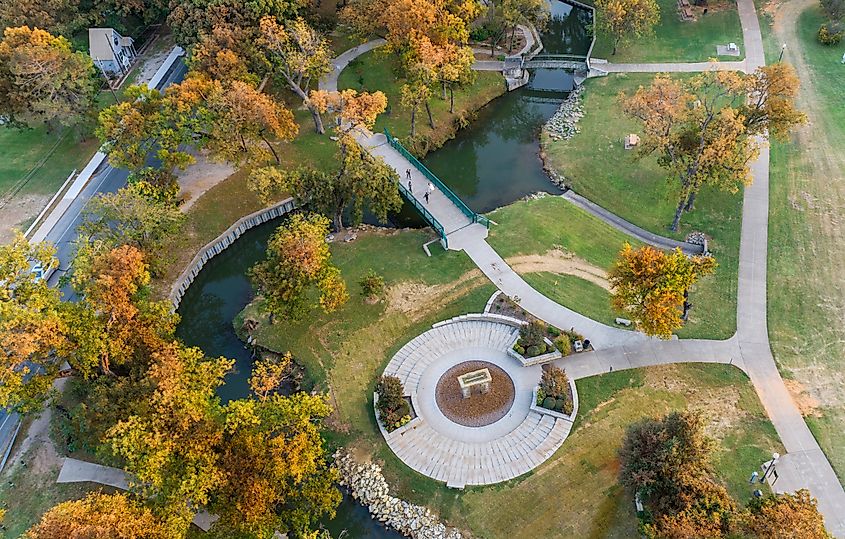
Granbury is one of the few towns in Texas with a courthouse square that remains fully intact and fully used. The limestone buildings around the 1891 Hood County Courthouse still hold a working theater, pharmacy, and city offices. Granbury also claims the burial site of Jesse James, whose family insisted he lived under an alias and died here in 1951. The Granbury Cemetery includes his marked grave, which draws occasional outlaw tourists but mostly local historians. Lake Granbury, a 33-mile-long reservoir, wraps around the town and feeds into a sandy beach park three blocks from the square.
The Granbury Opera House, built in 1886 and restored in 2013, stages plays year-round under a domed ceiling with 309 seats. St. Helen’s, a shop on the square, sells hand-stitched aprons and locally printed greeting cards. The Granbury City Beach Park includes cabanas and a kayak launch and is maintained by the city, not a private HOA. Retirees use the walking trail from Hewlett Park to the beach each morning. The downtown visitor center stays open late during the monthly “Night on the Square” series.
Rockport
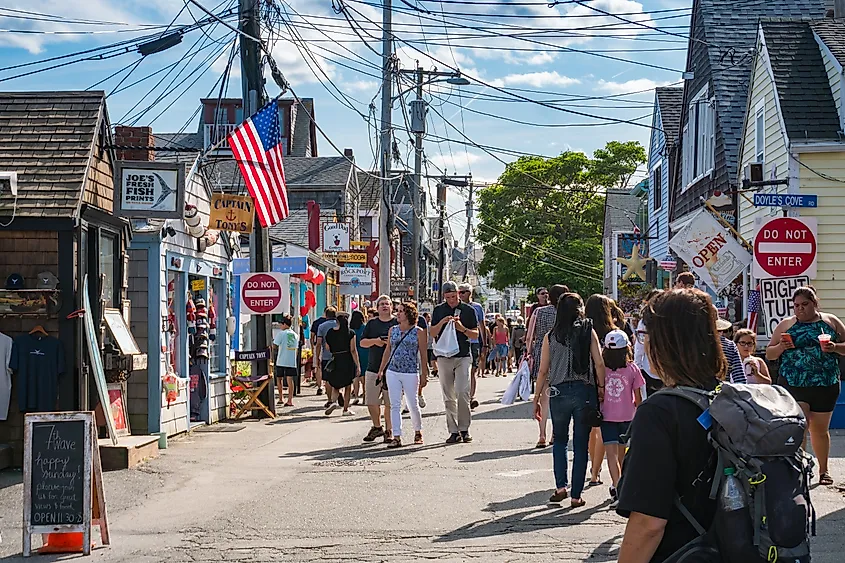
Rockport faces Aransas Bay, not the open Gulf, which shields it from heavy surf and allows the water to settle into a shallow, wadeable shelf. It was once a fishing and shipbuilding hub, and its boatyards still launch trawlers and bayboats daily. The Fulton Mansion, completed in 1877 with indoor plumbing and central heating, sits just off the water and anchors the historic district. Many of its original furnishings remain. Rockport’s reputation as an art town started in the 1960s, when painters from Austin and Houston moved into hurricane-damaged cottages. The Rockport Center for the Arts now runs gallery space, classes, and an annual juried festival every summer.
Rockport Beach is Texas’s first Blue Wave-certified beach, kept to national clean-water standards. It includes palapas, showers, and a saltwater lagoon near the south end. Latitude 28°02', located on Austin Street, combines a seafood restaurant with an art gallery that sells local coastal paintings. The Texas Maritime Museum, one block inland, includes a working Fresnel lens and a dugout canoe carved by the Karankawa. The Connie Hagar Cottage Sanctuary, a birding site named after the town’s early naturalist, is used as a stopover by migrating warblers, pelicans, and roseate spoonbills.
Bastrop

Bastrop is set inside a relic forest known as the Lost Pines, a pocket of loblolly pine trees cut off from the East Texas Piney Woods by 100 miles of prairie. It’s one of the few places in Central Texas where pine needles cover the ground and the air smells like sap. The town was once a riverport for steamboats hauling cotton up the Colorado River. Some of those early buildings still stand on Main Street, now filled with galleries and small-run shops. The Bastrop Opera House, in continuous use since 1889, seats just over 100 and produces plays, cabaret shows, and live readings with local casts.
Bastrop State Park includes 10 miles of hiking trails and an original Civilian Conservation Corps lodge built in the 1930s from Bastrop brick and local stone. Neighboring Buescher State Park is connected by Park Road 1C, a two-lane road that cuts through fire-recovered pine forest and is used for cycling loops. The Colorado River runs behind the town and supports paddling routes, including moonlight kayak tours that leave from Fisherman’s Park. Maxine’s Café on Main serves fried green tomatoes and buttermilk pie in a building that operated as a department store for 70 years.
Texan Towns Built for Retirement
Texas retirement is not a single template but seven sharply etched options. Fredericksburg pairs hill‑country wine with Pacific‑War history; Kerrville blends folk music with riverbank trails. Boerne’s freethinker heritage, Marble Falls’ lakeside granite, and Granbury’s living courthouse square add further flavors. Coastal Rockport offers art beside a Blue‑Wave beach, while Bastrop shelters within rare pines. Each town delivers healthcare access, walkability, and character—proof that small‑scale Texas still rewards new beginnings.











